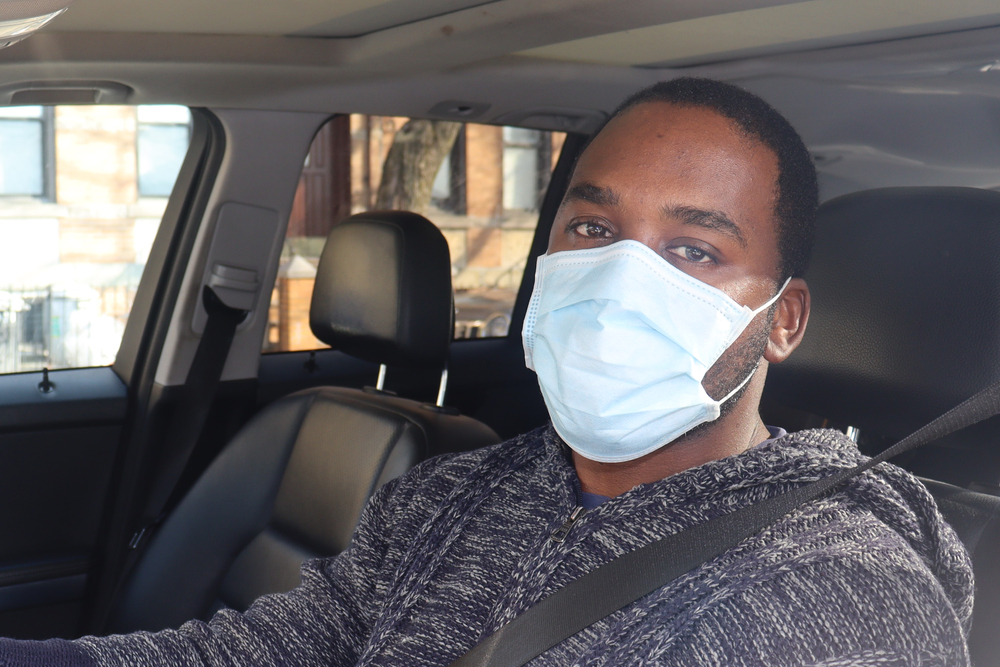
I won’t go into detail about the COVID-19 pandemic, as my elf colleagues have documented the challenges imposed worldwide amazingly well in their recent articles. However, I will highlight that research has skyrocketed since the coronavirus outbreak, as researchers and policymakers strive to better understand the impact that this new way of living has on our mental and physical health. By exploring the effects of social distancing, remote working and lockdown, we can inform new policy strategies and decision-making at an individual or systemic level, identify available sources of support and continue to be hopeful for a brighter future ahead. For those interested in recent research and resources, the UCL Covid-19 Social Study, the IASP COVID-19 Resource Centre, the COVID Trauma Response Working Group, the Co-SPACE study and the COH-FIT study are a few good places to start.
In summary, the repercussions of the pandemic have been immense, not only for the general population, but also for frontline staff in healthcare and community settings (Johnson et al., 2020; Greene et al., 2020) and people with pre-existing mental health problems (O’Connor et al., 2020; Zortea et al., 2020). Direct and indirect consequences of the pandemic are noticed across the UK population including reports of increased depression, anxiety (Fancourt et al., 2020; Iob et al., 2020), poor sleep and loneliness (Bu et al., 2020; Giebel et al., 2020), and a higher frequency of abuse, self-harm and suicidality among certain groups (Iob et al., 2020).
Research on the short-term and long-term effects of COVID-19 on people with mental health difficulties has been limited, although a higher risk has been hypothesised early on in experiencing social isolation, exclusion, and stigma, as well as financial, employment and housing difficulties (Kaufman et al., 2020; Holmes et al., 2020). Consequently, Luke Sheridan Rains and colleagues (2020) aimed to fill the gap, map and synthesise reports within the public domain through a rapid qualitative framework synthesis to explore the impact of COVID-19 and the subsequent public health measures, self-help strategies, challenges faced by mental health services and adaptations to cope.

This new paper aimed to “map early impacts of the pandemic on people with pre-existing mental health conditions and the services they use”.
Methods
The authors adopted a multi-faced approach and conducted thorough searches in various online databases and grey literature. In detail, they searched:
- PsycINFO, PubMed, Social Science Citation Index, CINAHL,
- Relevant journal, professional body, governmental and mental health organisations websites,
- Google Advanced and meta-search engines,
- Google searches on all languages and Google news,
- Experts recommendations, and
- Relevant websites of mental health organisations in foreign languages besides English.
The review includes a wide range of sources published in the public domain, such as peer-reviewed papers, articles, blogs, commentaries and media (videos or podcasts) relevant to the research questions. The authors included documents for review only if they met certain criteria including COVID-19 outbreak, being focused on mental health services and service users who have experienced mental health problems prior to the pandemic, dated between January to April 2020 and written in any of the researchers’ native languages (English, French, Spanish, German, Italian, Mandarin Chinese).
Results
The researchers identified 872 relevant sources and the following themes emerged:
Impact on people with pre-existing conditions
The authors identified many narratives around the deterioration of mental health following the onset of the pandemic and the increase in difficulties, including financial problems and concerns around employment. Practitioners also shared the view of the negative effects the coronavirus has had on people with pre-existing mental health conditions. People reported higher anxiety in relation to COVID-19 infection or death, social distancing measures, loss of mental health support and increased domestic difficulties (i.e. domestic abuse, conflict).
Experiences of people with mental health problems
People with lived experience of mental distress have experienced added risks to their wellbeing and sudden changes in their social life:
- Feelings of loneliness and isolation were reported and were found to impact mental health in several ways. Public health measures, restricted activities and social connection, and the closure of services were some of the many reasons people gave for loneliness. Patients in psychiatric wards were particularly affected by suspension of visits, leave and ward activities.
- Lack of access to essential services was discussed as a problem by some, including cancellation or interruption of therapy, replacement of face-to-face treatment with digital or telephone assessments. People felt “abandoned” and shared that “we are not all in this together”, as the enhanced use of technology highlighted the existing inequalities.
- Family and social adversities was a central theme in discussions. The lack of access to services had increased the pressure on families or informal/formal carers to support those with mental health difficulties. People felt they were a burden to their relatives. Others expressed concerns included family conflicts, aggression and domestic abuse (i.e. intimate partner violence and towards children).
- No specific narratives on COVID-19 infection risks were identified. Some reports expressed the ‘dual stigma’ for people with mental health problems as a barrier to access good quality care for COVID-19.
- Positive experiences of life during the pandemic included beliefs like we are all “in the same boat” because we experience a shared trauma and similar challenges. People felt more accepted by society and increased levels of community and connectedness were described. Some accounts shared the importance of remote and digital support (i.e. people with disabilities).

The findings suggest that people with pre-existing mental health difficulties experienced deterioration in symptoms, loneliness and social isolation. However, the importance of emotional and practical support, efficient coping strategies and perseverance was highlighted.
Strategies to cope with the pandemic
According to this review, people with mental health difficulties adopted both individual self-management strategies and peer or community support to cope with the difficulties experienced following the outbreak. Replacement of activities and routine, engaging with creative activities (i.e. cooking or painting), logging their worries and positive experiences in a journal and self-help techniques (i.e. mindfulness) were among the most reported. Some expressed a reduction of media use and news and the importance of maintaining a positive and hopeful attitude. Practical and emotional support was a common theme, including collecting medication or food deliveries, sharing feelings and thoughts during the pandemic, facilitation of digital support within peer networks and maintaining meaningful relationships.
Service impacts, challenges and adaptations
Official data were not available, but it seems that during the pandemic mental health and community services received less referrals. Shared concerns included the spread of infection within a therapeutic environment, lack of PPE and difficulty or unwillingness of patients to adhere to safety protocols. Ethical challenges were also reported worldwide, such as reduced access to legal representation, shifting time limits on detention, poorer quality of physical healthcare for COVID-19 because of mental health stigma, increased psychiatric medication and sedation in inpatient services, and fear of coercive and restrictive practices in wards.
You can read recent findings here, as Huggett (2020) reviews a mixed-method study conducted by the same research team, which explores this theme thoroughly and gives greater detail on the experiences of frontline healthcare staff.
Expectations and concerns for the future
The authors suggested that:
Internationally, a delayed wave of increased need for services was widely anticipated, potentially combined with reduced resources to meet this, especially where services are already underfunded. The potential long duration and fluctuating nature of the pandemic was also a concern: coping strategies may not be sustained at individual or service levels.
Conclusions
The authors indicated that in several countries people with pre-existing mental health difficulties experienced added impact on their wellbeing since the onset of the COVID-19 outbreak, while mental health services were challenged with safety protocols, adaptation to remote work and stressors related to risk of infection.

Mental health and community services have been challenged to quickly adapt and find ways to support service users during the ongoing pandemic.
Strengths and limitations
This rapid synthesis is timely, as it helps us to understand some of problems that people with pre-existing mental health difficulties are facing and inform policy responses. To the authors knowledge, this study is the first to include reports from a wide variety of sources, including personal narratives of lived experience, blogs, online media news and research evidence and from an international perspective. Although they didn’t adopt a global scope, the evidence still covers multiple languages and cultures; mostly though focusing on high income countries.
Most of my thoughts on limitations were already acknowledged by the authors, including the lack of perspective from low- and middle-income countries, the lack of peer reviewed research evidence and the wide scope of the research itself. Future studies should include qualitative work to understand in-depth these experiences cross-culturally. Are the same factors of similar importance to people from Mediterranean countries compared to people from Scandinavian countries for example? What about differences in stressors between HIMCs and LMICs? The majority of research so far (understandably) is happening nationally, while the outbreak is international and we are dealing with it from different time zones, cultural backgrounds and under different governments or strategic guidelines. How do cultural elements and social cohesion help in coping with the pandemic and the short-term impact?
Something that hasn’t been discussed here, and seemingly nowhere that I am aware of, is the migration experience. My hypothesis as a migrant myself, is that people who don’t live close to their family home or don’t have a support system nearby, would have an added emotional burden to deal with – this of entrapment in a foreign country, health anxiety, barriers to access healthcare for COVID-19 infection, loneliness, separation from family and the list can go on and on. Imagine how migrants with pre-existing mental health difficulties may feel. What I am asking all researchers is, please take us into your consideration when conducting research. Our worries and difficulties may be different from the general population of the country you are conducting research in.

Future research should explore cross-cultural differences on the impact of COVID-19 pandemic, long-term effects including low- and middle-income countries, and the experiences of migrants.
Implications
The study provides important evidence to generate new research and conduct further work in challenges already reported. It’s forward-thinking to understand the early impact and the short-term effects of the pandemic, in order to prevent long-term effects and take action in early stages. Clinicians and mental health services could transform their practice taking into consideration all the added difficulties people with lived experience of mental health may feel and adapt their services according to needs and availability.

Clinicians and mental health services have a growing body of COVID-19 evidence at their disposal, to inform their decision-making and service development.
Statement of interest
As an alumni of UCL Division of Psychiatry, DK knows personally some of the authors of the paper (SJ, TS, FB, HRS, NM), but had no involvement in this research.
Links
Primary paper
Sheridan Rains L, Johnson S, Barnett P. et al. (2020) Early impacts of the COVID-19 pandemic on mental health care and on people with mental health conditions: framework synthesis of international experiences and responses. Soc Psychiatry Psychiatr Epidemiol (2020). https://doi.org/10.1007/s00127-020-01924-7
Other References
Bu, A. Steptoe, D. Fancourt (2020). Who is lonely in lockdown? Cross-cohort analyses of predictors of loneliness before and during the COVID-19 pandemic. Public Health. Volume 186, 2020, Pages 31-34.
Fancourt D, Steptoe A, Bu F (2020). Trajectories of anxiety and depressive symptoms during enforced isolation due to COVID-19: longitudinal analyses of 36,520 adults in England. medRxiv 2020.
Giebel, C., Cannon, J., Hanna, K., Butchard, S., Eley, R., Gaughan, A., Komuravelli, A., Shenton, J., Callaghan, S., Tetlow, H., Limbert, S., Whittington, R., Rogers, C., Rajagopal, M., Ward, K., Shaw, L., Corcoran, R., Bennett, K., & Gabbay, M. (2020). Impact of COVID-19 related social support service closures on people with dementia and unpaid carers: a qualitative study. Aging & Mental Health, 1–8.
Greene T, Harju-Seppänen J, Adeniji M, Steel C, Grey N, Chris R. Brewin, Michael A. Bloomfield, Jo Billings (2020). Predictors and rates of PTSD, depression and anxiety in UK frontline health and social care workers during COVID-19. medRxiv.
Iob E, Frank P, Steptoe A, Fancourt D. Levels of Severity of Depressive Symptoms Among At-Risk Groups in the UK During the COVID-19 Pandemic. JAMA Netw Open. 2020;3(10):e2026064. doi:10.1001/jamanetworkopen.2020.26064
Iob, E., Steptoe, A., & Fancourt, D. (2020). Abuse, self-harm and suicidal ideation in the UK during the COVID-19 pandemic. The British Journal of Psychiatry, 217(4), 543-546. doi:10.1192/bjp.2020.130
Kaufman KR, Petkova E, Bhui KS, Schulze TG (2020) A global needs assessment in times of a global crisis: world psychiatry response to the COVID-19 pandemic. Br J Psychiatry Open.
Holmes EA, O’Connor RC, Perry VH et al (2020) Multidisciplinary research priorities for the COVID-19 pandemic: a call for action for mental health science. Lancet Psychiatry.
Huggett C (2020) Staff views on the impact of the COVID-19 pandemic on mental health services and service users. The Mental Elf, November, 2020.
Townsend, E. (2020). COVID-19 policies in the UK and consequences for mental health. The Lancet Psychiatry. doi: 10.1016/s2215-0366(20)30457-0
Zortea, T., Brenna, C., Joyce, M., McClelland, H., Tippett, M., & Tran, M. et al. (2020). The Impact of Infectious Disease-Related Public Health Emergencies on Suicide, Suicidal Behavior, and Suicidal Thoughts. Crisis, 1-14. doi: 10.1027/0227-5910/a000753
Photo credits
- Photo by Adam Nieścioruk on Unsplash
- Photo by Josh Appel on Unsplash
- Photo by Kelly Sikkema on Unsplash
- Photo by engin akyurt on Unsplash
- Photo by Kyle Glenn on Unsplash
- Photo by Christopher Campbell on Unsplash
